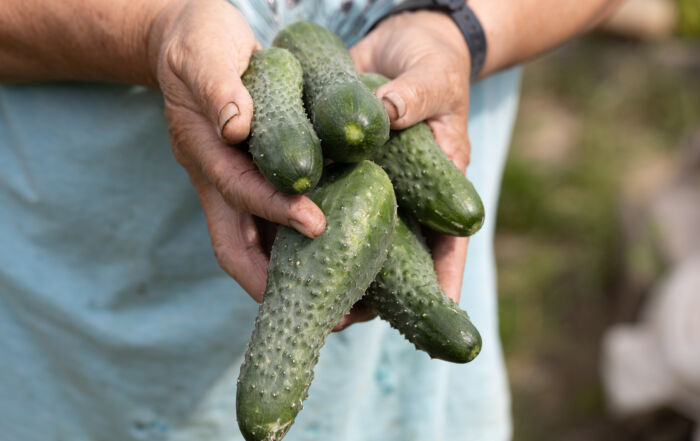Despite Gallup Polls, the US Does Have the Safest Food Supply in the World
As I settled into work one morning last week, a headline popped up on my computer noting that confidence in the government’s ability to ensure food safety is at a record low in the United States. To be honest, even though the Boar’s Head Listeria Outbreak that I discussed in my last blog post is still in full swing, I was somewhat surprised by the report. The article went on to say that a new Gallup poll found that 57% of respondents now have a “fair amount” or “great deal” of confidence in the ability of the Federal government to keep the food supply safe. And while 57% isn’t bad, it was an 11-point downturn from the 2019 data. Further, the report went on to say that 28% of Americans do not have much confidence in the ability of the government to protect the safety of food, and surprisingly 14% have no confidence at all.
The report explored this declining trust between different demographic groups and even political ideology. In the end, the authors surmised that the drop in confidence could be the result of the large number of health threats, the increasing number of food safety recalls, and the overall declining trust in the Federal government. But I’d make the argument that we have one of the safest food supplies in the world, and much of this can be traced back to the efforts of the Federal government.
The United States food safety system really does stand out among other nations. Across the globe, there are 600 million cases of foodborne illness each year, resulting in 420,000 deaths and the statistics show that 1 in 10 will fall ill with a foodborne illness.
But it is difficult to compare food safety across countries. One report I read from the Global Food Security Index, released by the Economist Impact, which in 2022 ranked the US as #13 in the world – maybe not the top, but out of 113 countries ranked, not too bad.
… the increasing number of recalls cited in a recent Gallup study should not create less trust in the Federal government to protect the health of the public, rather it is a direct result of the sound food safety policies and stringent standards we have implemented and should reinforce our confidence…
The United States has found success thanks to a combination of rigorous regulations, advanced technology, and a robust infrastructure for monitoring and enforcing food safety standards. While not a comprehensive list, here are some reasons why the US stands out among others in the safety of food available.
The U.S. food supply is governed by well-established laws and agencies dedicated to food safety. Among these, the Food and Drug Administration (FDA) and the United States Department of Agriculture (USDA) play a critical role in ensuring the safety of all food distributed in the US.
The FDA oversees approximately 80% of the food supply, including dairy, seafood, produce, and packaged goods. It is also responsible for the enforcement of the Food Safety Modernization Act, which was signed into law by President Obama in 2011 and aims to transform the food safety system from a response mentality to a mentality of prevention, with implications in all sectors of the food chain.
USDA is responsible for the regulation of meat, poultry, and egg products. The Food Safety and Inspection Service is part of the USDA and enforces legislation, such as the Federal Meat Inspection Act, the Poultry Products Inspection Act, and the Egg Products Inspection Act.
These agencies implement strict safety standards for both domestically produced and imported food. Regular audits and inspections ensure compliance, while corrective measures are swiftly enacted in the event of a safety breach.
The U.S. food industry at both the private and public levels have leveraged technology to enhance food safety. DNA sequencing tools, for instance, allow scientists to quickly trace the source of foodborne illness outbreaks (see our previous blog about traceability in foodservice), facilitating faster recalls and containment. Automation and robotics throughout the food industry, including in foodservice operations, help to reduce the risk of human error and contamination during food production.
When food safety issues do arise, the U.S. is known for its quick and decisive response, which is a direct result of the strong collaboration between federal agencies and the private sector. When contamination is detected, recalls are quickly contained and the public protected. I would argue the increasing number of recalls cited in the Gallup study should not create less trust in the Federal government to protect the health of the public. Rather, the increasing number of recalls is a direct result of the sound food safety policies and stringent standards we have implemented and should reinforce our confidence in the ability of the government and private sector to protect the food supply in the United States.
Food producers in the U.S. also utilize smart agriculture practices, employing sensors, drones, and real-time data analytics to monitor crop health and detect contaminants. These innovations not only improve efficiency but also enhance the overall safety of food products.
A significant portion of the food consumed in the U.S. is imported, which necessitates stringent import standards. The FDA and USDA work to ensure that foreign suppliers meet the same food safety requirements as domestic producers. This is achieved through initiatives like the Foreign Supplier Verification Program, which requires importers to verify that the food they bring into the country is produced under standards equivalent to those in the U.S. Border inspections are frequent, and non-compliant products are either rejected or subjected to enhanced scrutiny before being allowed into the country.
Public health agencies like the Centers for Disease Control and Prevention (CDC) work alongside the FDA and USDA to investigate foodborne illnesses. Through systems like PulseNet, they track outbreaks nationwide, sharing information across states to identify common sources of contamination and prevent further spread.
Another key to the U.S. having the safest food supply is the high level of transparency and consumer education. Food labels are required to include detailed nutritional and ingredient information, as well as clear expiration dates. Consumers are also educated on safe food handling practices through public health campaigns, helping to reduce risks of foodborne illnesses in households.
While no system is perfect, a combination of many factors ensures that the U.S. continues to maintain one of the safest and most reliable food supplies in the world. Consumers can trust that the food they eat has undergone thorough scrutiny from farm to table, making food safety a priority at every step of the process. Risk Nothing.
READ MORE POSTS
Ongoing Outbreaks: What We Can Learn from the Most Recent Carrot and Cucumber Outbreaks
Last month in our blog, we highlighted the recent E. Coli outbreak stemming from onions served [...]
The Hidden Dangers: Allergens in Your Foodservice Operation
It has been a while since we have addressed or discussed allergens in the blogs. In [...]
What Have We Already Learned from the Most Recent E. Coli Outbreak?
In late-September and peaking in very early-October, reports of increased Escherichia coli (E. coli) 0157:H7 cases [...]
Ensuring Food Safety in Emergency Foodservice Operations
As we were reminded earlier this month, emergencies can strike unexpectedly, whether due to natural disasters, [...]










